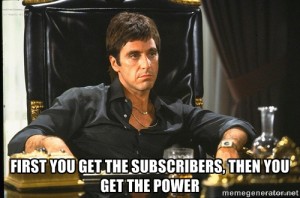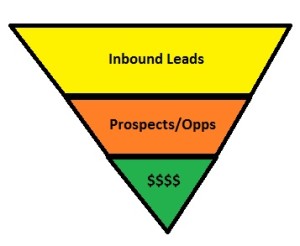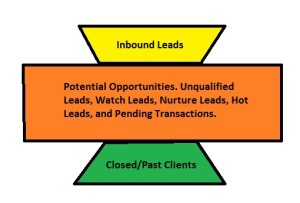Getting hungry is easy, but figuring out where to eat is where our time gets eaten.
The more options you have the more difficult of a task it becomes. As real estate pros continue to invest in online lead generation the number of things they can do continuously grows. Committing yourself to a set amount of time with a goal for prospecting is a great best practice, but in order to get the most out of it we need to get smarter about who we prospect, and how we do it. This is where using technology to create prospecting lists can make our lives easier, and ultimately yield more results for our efforts.
New leads are the typical default for most people. They haven’t had a contact yet so we start there, and see what happens. Speed to lead is incredibly important, but as I mentioned in a previous post the number of opportunities in our database is typically greater than our newly generated leads. This means we should probably focus on nurturing, and following up with our database in order to maximize our success. (success being in person showing & listing appts.)
Another way to think of prospect list creation is prospect prioritization. Use information to prioritize one person over another. Blindly calling all of your leads or picking a random point in the database to begin a power hour isn’t the worst thing in the world, but with a large database and growing market demand we frankly can’t share our valuable time with everyone. (your time is super valuable right?)
How Do I Prioritize My Leads?
If our goal is to get contracts signed then we must first ask a few questions of our database…
- Who is actively shopping?
- Who is furthest along in their search?
- Who have I already qualified as a buyer/seller with potential?
- Who is the best fit for my service and offerings?
Answering these questions in the past was either difficult or down right impossible, and we’ve all heard the phrase “buyers are liars”. In fact most internet leads work pretty damn hard to prevent sales people from identifying these things about themselves as a way of deterring unwanted sales pressure. Thanks to online real estate shopping, and smart data segmentation tools like BoomTown’s Lead Central (why yes I do work there) we can not only discover answers to questions like these, but actually create dynamically updated lists of leads for us to prospect.
Here’s an example of a great follow up segment you could create.
This bundle of boxes above is the end result of creating an advanced filter. Here’s how it’s done in detail…
- Select Categories: Nurture, Watch, Hot.
- Communication settings:
- Leads I’ve called and texted.
- That I’ve conversed with successfully.
- Latest Communication: Exclude last 5 days.
- Activity:
- Last Visit: In the last month
- Neighborhood: James Island.
Done! In about 30 seconds with a few clicks I just took this client database of over 75K+ down to 30 results. These leads in my segment are active on site, in potential categories, I’ve talked to them before, haven’t followed up in over 5 days, and they’re actively shopping in a specific neighborhood.
Quick note on the neighborhood piece: We don’t have to use one, but this is a huge indicator to “Who is furthest along in their search?”. Online home shoppers tend to start broad then narrow in on a neighborhood; from there they find specific houses they want to see, which turns into a showing request.
The nice thing about this segment is that it filters leads dynamically (leads appear and disappear as they meet the criteria). It also curates itself, because we excluded people we’ve talked to in the last 5 days. What that means is that if you call 5 of these leads they’ll fall off the list. Meaning we can actually work towards a very satisfying zero. The next day if different leads meet the criteria the list will fill back up.
The important thing about all of this is we’ve prioritized, we’ve hedged our bets on making a successful call, and we’ve created a segment we can come back to again later. This saves us a ton of time, and allows us to avoid making excuses.
What you’re seeing done above is just an example, and there are endless possibilities that can spin off from here. This is the future of real estate prospecting. Less time, more results. Now what if we have an in house ISA team calling all new leads, and setting our agents appointments? Not only can they use segments like these, but the agents can still use them to insure they don’t drop the ball with active shoppers. This increases production for everyone, and gets more out of our database.





Recent Comments